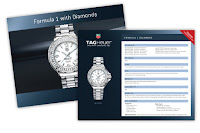It is a pretty interesting question how does the whole IT industry look like if we consider the role of the customer knowledge. With other words, let we imagine that we have a customer that wants to order user or buy a certain software solution. One of the most interesting question how much the customer knows about the field or software that is being ordered. The following picture shows the rough conceptual model.
Figure 1. The role of customer knowledge in software industry.
Based on the model, the following typical cases can be distinguished.
Everything in details: If the customer knows everything about the software that is being ordered than the most typical way is to create a custom development with one of the classical software development methodology, like waterfall model, V or W model. The specification can be really 100% defined and documented, typically the development can be carried out by a remote development team as well, giving a good potential for offshoring or near-shoring.
Detailed concept: Most customers do not really have a detailed concept about how the software exactly look like, usually because of the missing experience in requirement analysis and software engineering.This provide a perfect way for agile development, having a strong and common communication with the customer, delivering early prototypes and gaining feedbacks from the customer apart from the pure specification. The typical solutions of the fields are methodologies like scrum or extreme programming.
Rough Concept: If the customer has got only a rough concept which software does she need, than the software delivery has to be much more agile. This can be realized in two ways, on the one hand there are some hyper-agile framework like K2 or Oracle AppBuilder that enables to change the environment pretty fast, having practically daily software delivery. On the other hand some software frameworks provides the possibility for a power user to build up applications on their own, like standard SharePoint or partly with a Nintex extension.
Detailed Business Know-How: If the customer has got a detailed business know-how, however she lacks of the IT or software concept and experience than ready products are the best solutions to be offered. Certainly there might be a possibility to set up a team with a business analyst as well, however in this situation the best idea is always to buy a ready software if there is one. If not, custom agile development with business analyst support can be evaluated as well.
Rough Business Know-How: Well that is a difficult situation. Let we imagine a customer that wants to buy a software but she lacks of the necessary software development skills and experience, hence her business know-how is not perfect either. That means that the customer needs both business consulting and software product or development. The other solution that the customer has to buy software solution which is de-facto best practice on the market, meaning that business best practice is actually hard-coded in the software itself. SAP is a leading to deliver such solutions.
Minimal Business Know-How: Well in this case, the customer needs to have both pretty much business consulting and a software solution as well. In this case, the optimal way if the business consulting analysis precedes the software evaluation and the choosen product is actually based on the pure business consulting.







